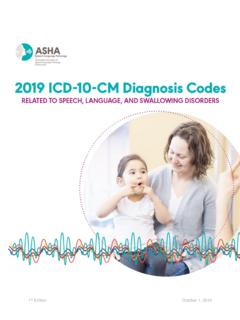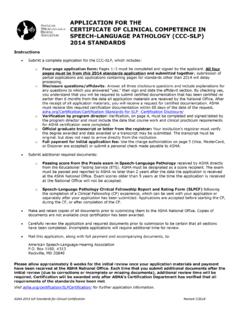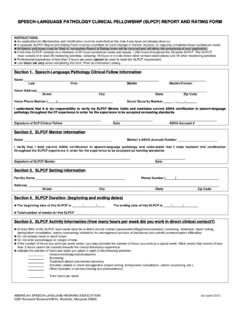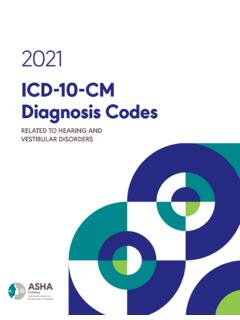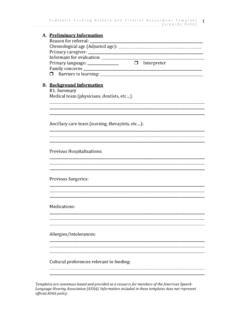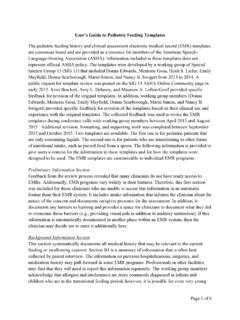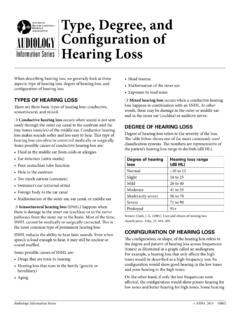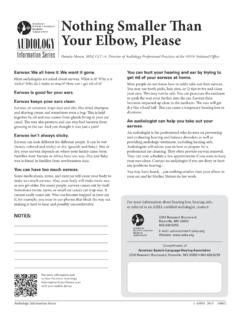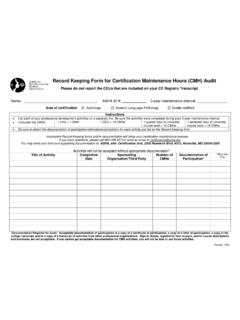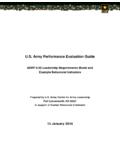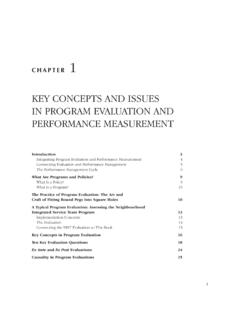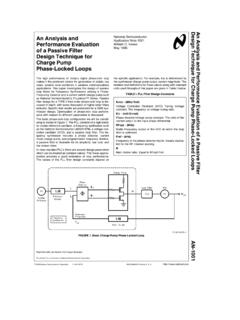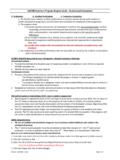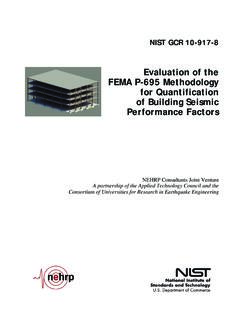Transcription of Adult Assessment Template: Voice Evaluation Form
1 Voice Evaluation Template 1 Templates are consensus-based and provided as a resource for members of the American Speech-Language-Hearing Association (ASHA). Information included in these templates does not represent official ASHA policy. Voice Evaluation Name: ID/Medical record number: Date of exam: Referred by: Reason for referral: Medical diagnosis: Date of onset of diagnosis: Other relevant medical history/diagnoses/surgery Medications: Allergies: Pain: Primary languages spoken: Educational history: Occupation: Hearing status: Vision status: Tracheostomy: Mechanical ventilation: Subjective/Patient Report: Observations/Informal Assessment : Vocal Hygiene Daily water intake: __<2 glasses (16 oz.)
2 ; __3-4 glasses (17-32 oz); a--5-7 glasses (33-56 oz); __8 or more glasses (>57 oz) Daily caffeine intake (coffee, tea, colas, others): _____ Daily alcohol servings: __0; __1; __2, __3; __>3; Other_____ Smoking history __Nonsmoker __Current smoker __Former smoker At what age did you quit? _____ For current and former smokers, At what age did you begin smoking: __ __Cigarettes: ___ cigarettes per day; ___ packs per day __Pipe: ___ per day __Cigar: __ per day __Chewing tobacco: ___ per day; week __Smoke recreational drugs: ___ per day; week; month Voice Evaluation Template 2 Templates are consensus-based and provided as a resource for members of the American Speech-Language-Hearing Association (ASHA).
3 Information included in these templates does not represent official ASHA policy. Vocal Activities (describe all that apply) Hrs. per day/comments Telephone without headset Telephone with headset Telephone with speakerphone Talking: one to one conversation Talking in noisy settings Talking to groups Yelling or cheering Whispering Imitating Others Throat clearing Coughing Phonation during exercising Singing Other Environmental Issues (Describe only those that apply) Comments Smoke Chemicals Allergens Temperature changes Reflux history __Yes __No Diagnosis: __Gastroesophageal reflux disease __Laryngopharyngeal reflux __Other Symptoms: _____ Frequency of symptoms: _____ Management (check all that apply): __Behavioral _____ __Medication _____ Dose _____ Vocal Performer: __Yes __No Vocal training type: _____ # of years performing.
4 _____ Singing range: _____ type of music performed: _____ type of accompaniment: _____ Voice Evaluation Template 3 Templates are consensus-based and provided as a resource for members of the American Speech-Language-Hearing Association (ASHA). Information included in these templates does not represent official ASHA policy. type of amplification used when performing: _____ Performance venues: _____ Amount of practice per week: _____ Warm up/cool down regimen _____ Other: _____ Oral-Motor Assessment [ ] WNL [ ] Notable for _____ Auditory-Perceptual Evaluation of Voice Consensus Auditory-Perceptual Evaluation of Voice (CAPE-V) [PDF] CAPE-V Purpose and Applications [PDF] Laryngeal Performance /s/:/z/ Ratio: _____ __functional for speech __reduced laryngeal function relative to respiration Maximum Phonation Time.
5 _____ __adequate for speech __reduced __unstable tone __unstable pitch __unstable loudness Comments: _____ Pitch Glide : __WNL; __ pitch breaks; __reduced range; __tension; __cessation of voicing. Comments: _____ Pitch range during speech: _____ Voice onset delay: __not present __present. Comments_____ Muscle Tension Assessment Tension Observed: __None; __Jaw; __Neck; __Shoulders; __Face; __Lips; __Other: Comments_____ Voice Evaluation Template 4 Templates are consensus-based and provided as a resource for members of the American Speech-Language-Hearing Association (ASHA).
6 Information included in these templates does not represent official ASHA policy. Laryngeal Carriage At rest: __neutral carriage; __high carriage; __low carriage Elevation during connected speech: _____ Elevation during sustained vowel: _____ Tenderness w/palpation/massage: __no __yes (__right; __left; __bilateral) Reduced thyrohyoid space at rest: __no __yes Tongue base tension w/voicing: __no __yes At rest: __no __yes Comments: _____ Breath Support At rest __Abdominal __Thoracic __Clavicular __Reverse Abdominal __Anchored __Mixed Comments.
7 _____ Sustained Phonation __Abdominal __Thoracic __Clavicular __Reverse Abdominal __Anchored __Mixed Comments: _____ Conversation __Abdominal __Thoracic __Clavicular __Reverse Abdominal __Anchored __Mixed Comments: _____ Speaks on Residual Air: __yes __ no Voice Evaluation Template 5 Templates are consensus-based and provided as a resource for members of the American Speech-Language-Hearing Association (ASHA).
8 Information included in these templates does not represent official ASHA policy. Postural Alignment Stance: __balanced; __slumped; __militaristic; __weight forward; __weight back; __right leaning; __left leaning; Neck: __free and loose; __jaw jut; __static; _____ Shoulders: __Symmetrical; __right higher than left; __left higher than right; __both high; Pelvis: __unremarkable; __lordosis; __knees locked; Comments: _____ Therapeutic Probes Therapeutic techniques attempted and results __Shifting tone focus _____ __Easy onset _____ __Hard glottal onset _____ __Easy onset _____ __Breath support _____ __Postural adjustment _____ __Laryngeal manipulation _____ __Increase loudness _____ __Decrease loudness _____ __Increase fundamental frequency _____ __Decrease fundamental frequency_____ __Other _____ __Stimulability and level of cueing _____ Findings __No Voice impairment __(mild, mild-moderate, moderate, moderate-severe, severe) Voice impairment characterized by _____ NOMS Voice score (1-7)
9 ___ Impact of Voice Impairment on Functioning: Activity Limitations and Participation Restrictions (check all that apply): Mild Moderate Severe __Daily activities __Interpersonal interactions __Education __Employment __Community Voice Evaluation Template 6 Templates are consensus-based and provided as a resource for members of the American
10 Speech-Language-Hearing Association (ASHA). Information included in these templates does not represent official ASHA policy. Prognosis for improvement with treatment __good __ fair __poor, based on _____ Recommendations Voice treatment: __yes __no Frequency: _____ Duration: _____ Other suggested referrals __Gastroenterology __Neurology __Otolaryngology __Psychology __Pulmonology __Other _____ Other recommended procedures: __Endoscopy __Stroboscopy __Other _____ Patient/Caregiver Education __Described results of Evaluation __Patient expressed understanding of Evaluation and agreement with goals and treatment plan __Patient expressed understanding of Evaluation but refused treatment __Family/caregivers expressed understanding of Evaluation and agreement with goals and treatment plan.

